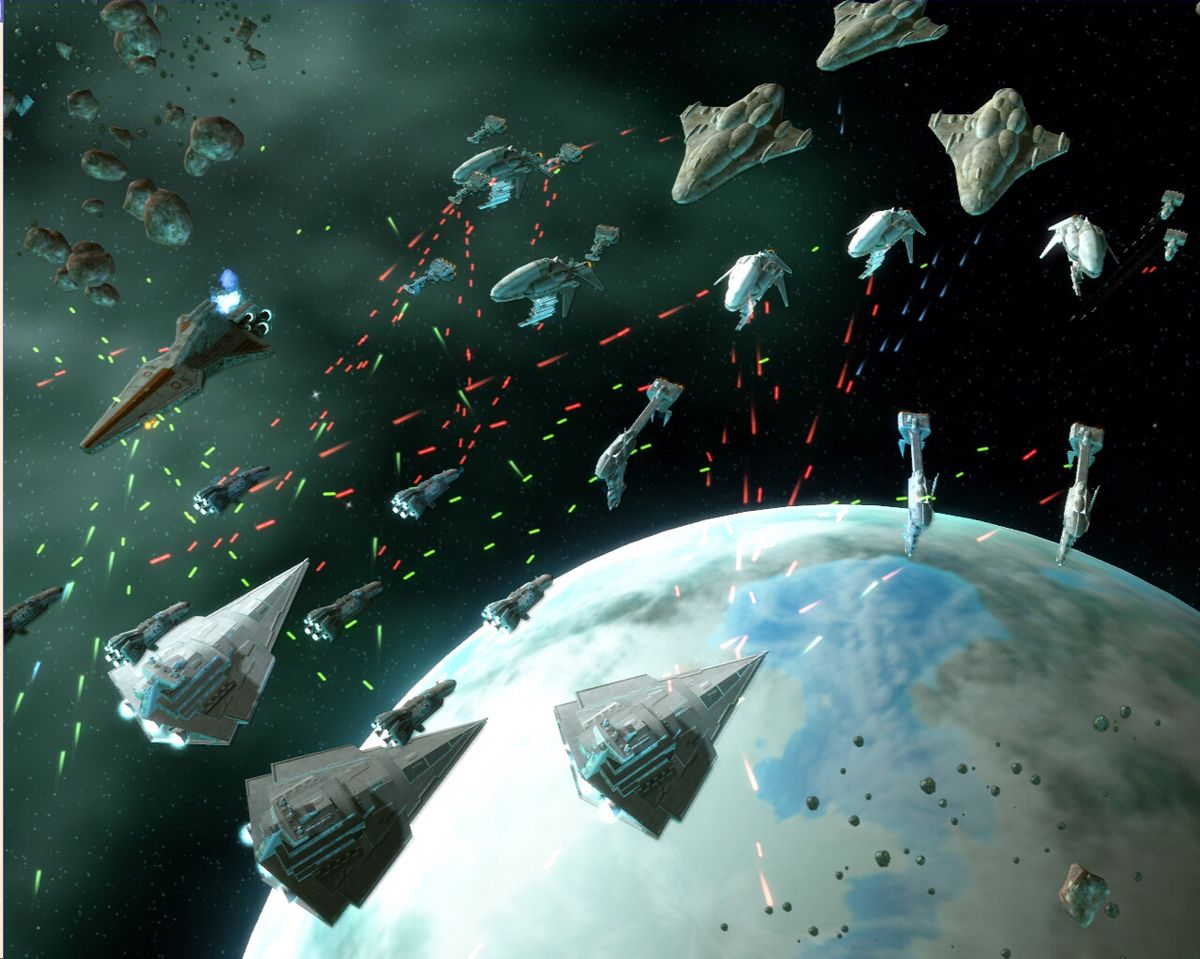star power
’Clone Wars’ the latest in ever-expanding franchise

It’s been said before but it bears repeating: Take George Lucas away from his “Star Wars” or “Indiana Jones” franchises, and he’s an ordinary filmmaker. Immerse him in either series, however, and Lucas looks like a genius.
Of course, that genius label may apply only if you’re judging by box-office grosses. But it’s an arguable point that Lucas’ sense of cinema is marked also by originality and enduring influence.
The former of those franchises – the one starring the Skywalker clan, Jedi Knights and that dark-masked creature with the voice of James Earl Jones – is the topic of the moment. And that’s because today’s big movie opening is “Star Wars: The Clone Wars,” director Dave Filoni’s animated variation on the “Star Wars” universe that Lucas invented in the mid-1970s.
“I felt there were a lot more ‘Star Wars’ stories left to tell,” Lucas said in a press release on www.cartoonnetwork.com. “I was eager to start telling some of them through animation and, at the same time, push the art of animation forward.”
“The Clone Wars” is, then, an amplification of the existing “Star Wars” mythology. It deals specifically with an incident that occurs between the events portrayed in the live-action feature releases “Star Wars: Episode II – Attack of the Clones” (2002) and “Star Wars: Episode III – Revenge of the Sith” (2005).
Whether any of those stories is worth telling, or whether the new film – and forthcoming animated television series – pushes the art of animation anywhere at all, much less forward, is up for debate.
Here, though, is what’s undeniable: For better or worse, no movie franchise has been more successful in cinema history than Lucas’ “Star Wars” saga. Since the release of the first installment in 1977, the six films in the series have earned a combined $4.2 billion.
That’s right, billion. Add in revenues from toys and TV shows and video games and novelizations and comic books and, well, we’re talking about some serious change – enough to make even the Emperor Palpatine feel just the slightest bit of envy.
Such an economic juggernaut can’t help but affect the overall culture. Consider how the universe that Lucas wrought has affected our very language:
“A long time ago in a galaxy far, far away…”
“The Force is with you.”
“ Luke … I am your father.”
And even all these years later, talk like Yoda some of us do.
Clearly, though, this level of success hasn’t been enough for Lucas. He needs to keep telling the same story, centering as it does on the life of a boy, his father, the friends him makes and the places they occupy at an important time … a long time ago in a galaxy far, far away.
Here are some of the ways the “Star Wars” tale, over the years, has been told.
Feature films
Movie history changed on the night of May 25, 1977. Two summers before with “Jaws,” Steven Spielberg and Universal Pictures had proven, against standard industry wisdom of the time, that people would go to movies during the summer. Buoyed by lots of prerelease hype, “Star Wars” became a phenomenon.
As Time magazine film critic Richard Corliss wrote in 2006, “ ‘Star Wars’ changed everything. … With its then-wizardly special effects, and the cheerleading use to which they were put, it cued a revival of the s-f genre, which had been a B-movie fad in the ’50s.”
“Star Wars” was followed three years later by “The Empire Strikes Back” and in 1983 by “Return of the Jedi.” And there things stayed, even as the original trio garnered new fans though first VHS and later DVD releases.
Then, aided by advances in computer graphics, Lucas decided to continue his story … as a prequel. Which is how the first three episodes – “The Phantom Menace” (1999), “Attack of the Clones” and “Revenge of the Sith” came to be.
Video games
Go online to www.lucasart.com/games and you’ll see that Nintendo has a new “Star Wars: The Clone Wars Lightsaber Duels” game designed for its Wii game system. But that’s hardly the only one. Dating back to the early 1980s, Lucas has offered dozens of games for the entire range of gaming systems, from Atari to Sega, Wii to Xbox, Playstation (plus portables) to Mac and PC Windows.
Comic books
Nothing gives a better idea of the scope of the “Star Wars” universe than the varied and numerous comic-book stories that have explored the ancient era before the Battle of Yavin (the attack on the Death Star featured in 1977’s “Star Wars”) through the “Clone Wars” and the New Jedi Order and beyond. Some of the noted graphic-novel/sci-fi authors who have toiled in the “Stars Wars” universe include Garth Ennis (“Preacher”), Alan Dean Foster (who wrote the original novelization for “Star Wars”) and Alan Moore (“Watchmen”).
Television series
In the mid-1980s, Lucas produced two “Star Wars”-themed cartoon shows: “Ewoks” (life among the furry creatures before the Battle of Endor, which concludes “The Return of the Jedi”) and “Droids” (featuring R2-D2 and C-3PO before they joined forces with Luke Skywalker).
Lucas has announced that he’ll produce a live-action spinoff that, instead of relying on the Skywalker crowd, will feature secondary “Star Wars” characters and stories. Before that, though, he’ll air a 3D version of “The Clone Wars,” now in production, that follows in the fashion of shorts that have already played on the Cartoon Network.